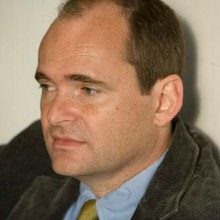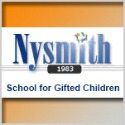
Daniel J. Menelly is the Vice President of STEM Education at the Liberty Science Center. He is also an Albert Einstein Distinguished Educator at the National Science Foundation (NSF) and a board member and Science Education Advisor at Science House, LLC.
Menelly spoke with WashingtonExec on the topic of STEM, specifically why STEM is such an important issue, how to get parents and their daughters involved, STEM role model and misconceptions, best case-scenarios, the future of STEM, and more.
WashingtonExec: What is your background and how did you get involved in STEM?
Daniel J. Menelly: I’m a biologist, yet originally started my career in finance in the 1980’s. Later, during graduate school, I began teaching science during a period of intense focus on the training and evaluation of science teachers in my region. My involvement in developing tools to assess and certify the work of science educators inspired me to look very closely at my teaching and to rethink my own models, tools, resources and lesson structures. Later, while teaching in international schools in New York and in France, I began experimenting with technology and STEM education media, and I developed an interest in STEM education policy that I pursued through an Einstein Fellowship at the National Science Foundation. Today I am focused on engagement, outreach and the relationship between STEM learning and teaching in formal and informal learning environments.
WashingtonExec: The U.S. is not turning out the engineering students that we need to in order to compete as an innovative country. Why is this issue so important?
Daniel J. Menelly: Building capacity in the STEM career pipeline is important because many economists see innovation as an engine of economic vitality. Most states predict substantial increases in STEM jobs by 2018, and we need to partner on ways to plan for that. I can envision a great many other benefits to driving up participation in the STEM disciplines, from improvement in the quality life to preparing the next generation of learners to think creatively about global challenges, such as energy conservation, climate change, resource depletion and other issues that may not have yet been considered. In the broadest sense,
_______________________________________________________________________________________
I see STEM as a means of informing life’s most simple and complex decisions, from how high to safely climb a rope in a playground to which orthopedic surgeon (or robot) will replace your knees and hips 75 years later, as well as the millions of decisions that we make in the space between.”
________________________________________________________________________________
WashingtonExec: What’s your view to get more parents and especially girls involved in STEM?
Daniel J. Menelly: One of several opportunities may include engineering more immersive learning environments. By that I mean looking at classrooms and play spaces through a prism of learning and engagement and partnering with learners themselves in developing new tools, resources and experiments. I’m always encouraged to see parents questioning children actively with open minds and building on the responses they hear. I’m very lucky to work in a huge Science Center, and to witness parents and teachers continually coaching young thinkers to ask themselves and others “Where is the science here? How do you think this works? How can we improve this?” and best of all, “What if…?”
WashingtonExec: What’s the best STEM success case study/project that you have been personally involved in?
Daniel J. Menelly: I’m pleased with the result of a free iPhone application that I co-developed called Videoscience. It is a series of 80 videographic tutorials in which I coach viewers on how to offer hands-on science to children safely and inexpensively, with portable lasers, dry ice, kitchen chemicals and tools that are re-adapted for science experiments. My intent was to turn the iPhone into a “digital teaching coach” for new teachers, parents, youth group leaders, babysitters and any other viewer who wants to teach kids about science. Similarly, I teach in a virtual learning environment called microglobalscope.org, where students and teachers in 25 countries learn about digital microscopy with tools provided by the project and share their data in an online portal.
________________________________________________________________________________________
I like the hands-on aspect of this experiment in blended learning.”
_________________________________________________________________________________
WashingtonExec: Who is your STEM role model and why?
Daniel J. Menelly: To coin a phrase…I could write a book. I’m a huge admirer of the work Dr. Sugata Mitra and his exploration of self-organizing systems in primary education. His team’s work is so illuminating, yet I am also drawn to the manner in which he describes the research to others – with such clarity, warmth and optimism about learning in all contexts – and the roles and relationships that form in the process. I’m also fascinated by Edward Tufte’s work with informational design and data visualization and can easily understand the great excitement surrounding it. Your question also calls to mind a great many science writers and inventors whose work I have admired and integrated into my teaching.
WashingtonExec: What’s the biggest misconception about STEM?
Daniel J. Menelly: I often sense that many stakeholders harbor a narrower view of STEM than that which was intended by those who coined the acronym.
WashingtonExec: What’s the future of STEM? How can other like-minded people get involved?
Daniel J. Menelly: I’m very excited to see a greater exploration of the overlap between formal and informal learning environments and tactical ways to merge the potential of each. I envision a greater emphasis on computational thinking and deeper explorations of data in all its forms and by all demographics of learners. I hope to see greater evidence of adapting the teaching of STEM to those with learning differences and a continual recruitment of alternate perspectives into scientific discourse when we ask each other “What is your experience of this idea? What can you share with me that others may not be aware of?”. I am also watching some fascinating work with humanoid robotics emerging in France, and I’m eager to see that technology evolve into tools for learning.
With the great attention and focus on STEM, we need to galvanize the commitment of stakeholders to enact the wisest, most forward-thinking policies for the greatest benefit. If we hesitate, we run the risk of going from Sputnik to Kaputnik.


